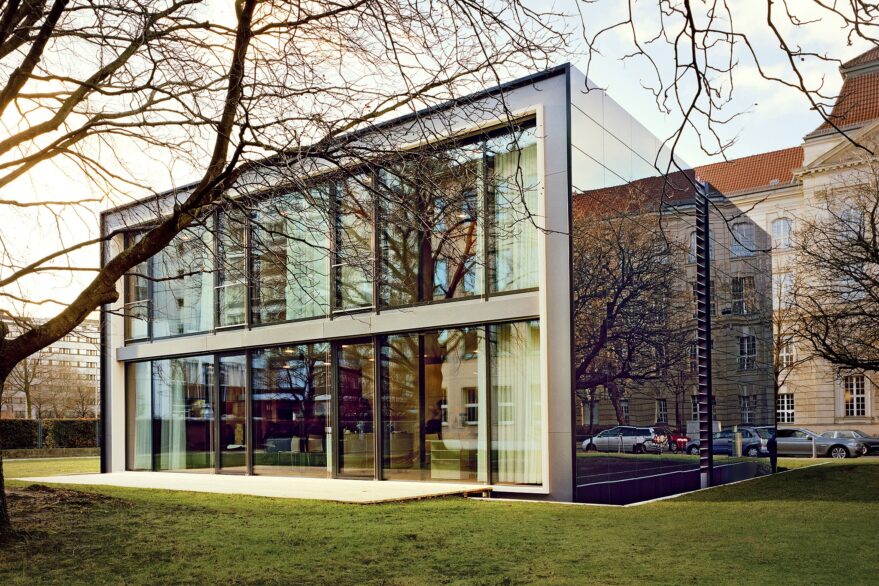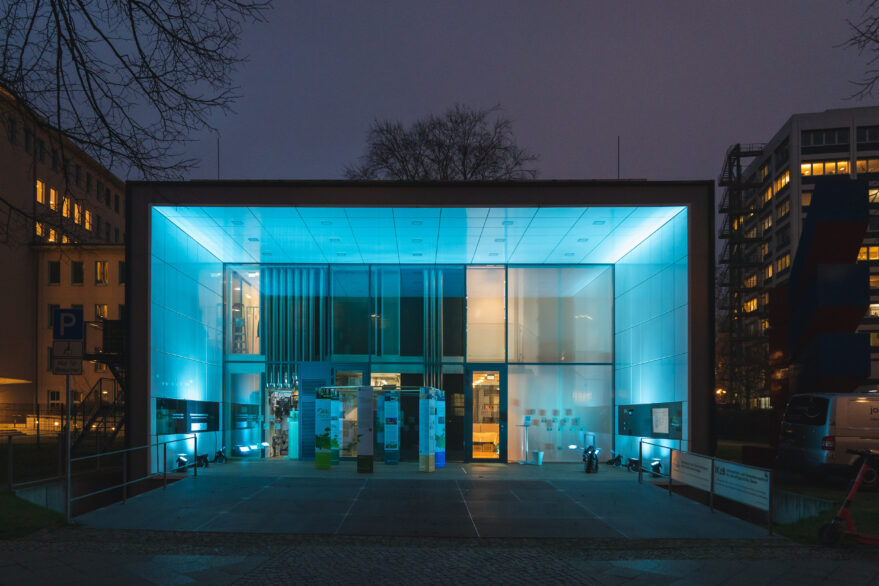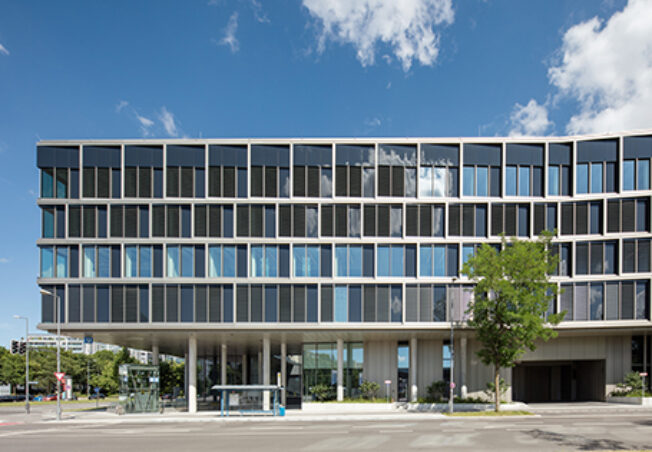F87
F87 emerged as the winner of the realisation competition “Efficiency House Plus with Electromobility” of the Federal Ministry of Transport, Building and Urban Affairs (BMVBS). The building, designed by Werner Sobek in cooperation with the Institute for Lightweight Structures and Conceptual Design (ILEK) at the University of Stuttgart, realises the unprecedented linking of energy flows between emerging electromobility and our built environment.
Plus-energy House with Integrated Electromobility
Werner Sobek’s design shows that in the future it will be possible to build houses in widespread use that generate far more regenerative energy than they need. And which are thus also able to fully supply the residents’ e-mobiles with energy.
F87 also proves that in the future, buildings can be designed and constructed in such a way that after their use, it is possible to recycle all building materials without any problems. This makes F87 a pioneer of sustainable construction in Germany.

Pioneer of Sustainable Building in Germany
Due to the extremely high sustainability requirements and very short planning and construction time (11 months in total), the house was planned and built in timber panel construction with a very high degree of prefabrication. Since the building is to be completely deconstructed and recycled after a service life of about 2 years, not only the energy concept but also the choice of materials and the construction method played a key role from the very beginning.

Glass Supply Core as a Link
A glass supply core functions as an energetic and architectural link between the mobile and immobile living areas of the residents. While a compact building adjoins on the garden side, an open, uninsulated frame construction serves as a large showcase for the public on the street side. The focus of the innovation lies in the interface of energy flows and storage capacities between the PlusEnergyHouse and the mobility of the future. The concept of the horizontal tripartition into the actual living area, the energy core and the showcase embodies this approach.
Thanks to the optimal spatial orientation and the integration of photovoltaics and solar thermal energy, F87 produces more energy than is needed to supply the building and the vehicles. This surplus energy is fed into the public grid.
Architecture
Werner Sobek, Stuttgart/Germany
Planning time
2010 − 2011
Construction time
2011
Services by Werner Sobek
- Design
- General planning
- Object planning
- Facade engineering
- Structural engineering
- Sustainability & recycling concept
- MEP engineering
GFA
245 m²
Client
Federal Government of Transport, Building
and Urban Affairs, Berlin/Germany
Photography
Matthias Koslik, Berlin/Germany
Jens Ahner, Berlin/Germany








